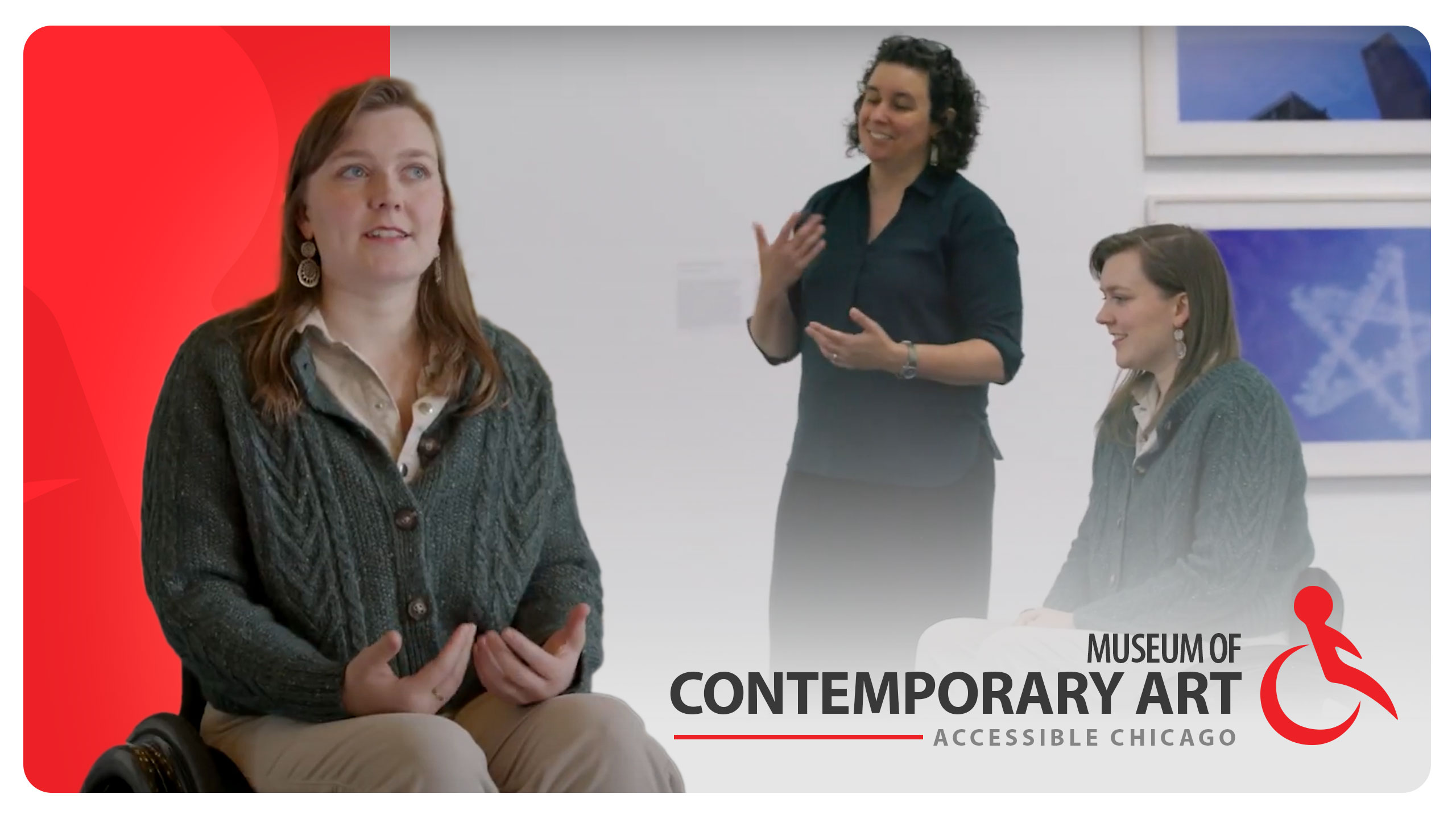
Join Meredith, a wheelchair user, and Jamar Beyonu, Director of Inclusion, Diversity, Equity, and Accessibility at the Museum of Contemporary Art (MCA) in Chicago, as they discuss the importance of accessibility and inclusion in the arts. Meredith shares her experience as a disabled individual visiting the MCA, highlighting the seamless accessibility from the moment she entered the museum. She emphasizes the significance of being able to navigate the space without obstacles and enjoy the exhibits like any other visitor. The museum collaborates with the disabled community to ensure authentic and inclusive practices.
Click to View ASL Transcript
(bright music)
MEREDITH: My name is Meredith. And we are at the Museum of Contemporary Art, here in Chicago. I am a wheelchair user, as you can see. I have been disabled for about 10 years now. And so accessibility is important to me because it’s a matter of being able to be included or not.
JAMAR BEYONU: My name is Jamar Beyonu. I am the Director of Inclusion, Diversity, Equity and Accessibility at the Museum of Contemporary Art Chicago. Support for accessibility is very important to us. And we want to support folks from all walks of life, including folks with disabilities.
MEREDITH: I felt like the Museum of Contemporary Art Chicago accommodated me from the second I walked through the door. I was able to get in. And I know that doesn’t sound like a lot. But a lot of time, that’s half the battle. My tour guide, Amy, was able to answer any of my questions that I had.
JAMAR BEYONU: We’re really proud to have partners who are disabled, that give us insights into what we can be doing better. We aren’t living the experience in all cases, and to have folks who have that lived experience — it helps us to be authentic in what we’re doing with accessibility.
MEREDITH: I think, as a disabled person, a lot of the time people think that accessibility is all I think about on a daily basis. And it is and isn’t. When things aren’t accessible, it really gets in the way of my day. But when I come into a space like this, and I can easily get around, and I get to view everything without any obstacles, I just get to enjoy the museum like anyone else, which is great. Something that I sometimes run into in art museums is that pieces are hung at the eye level of a standing person. But I didn’t have that problem at all today. When we think about going to an art museum, we think a lot about seeing artwork. I like when things are interactive. It feels more accessible, and for, like, the blind community, other friends with disabilities of different types than mine. It makes it more accessible to everyone.
(bright music continues)
MEREDITH: They had sensory kits available. Hearing-assistance devices — things of that nature.
JAMAR BEYONU: Cart captioning, ASL support, accessibility kits and specific accommodations for those with differing needs. We can mold ourselves to the needs of that community.
MEREDITH: And then in addition to those things, there were also elevators. Nice, spacious. Able to get to all the exhibits on every floor.
JAMAR BEYONU: We want to be a location that folks with disabilities feel like they can come to comfortably.
MEREDITH: I got to see just how accessible it is. It really just makes me more inclined to invite my disabled friends and family and colleagues.

Recent Comments